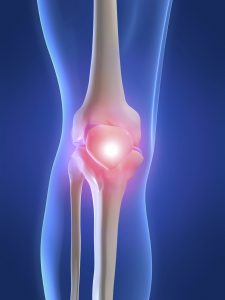Brian Schiff’s Blog
Injury Prevention, Sports Rehab & Performance Training Expert
Knee pain is prevalent among adolescents and active adults. Patellofemoral pain and osteoarthritis are the most likely causes of pain. It may be present with squatting, lunging, prolonged sitting, kneeling, running, jumping or twisting.

Research seems to support a combination of hip and knee strengthening as a primary line of defense and treatment for knee pain. Interestingly, males with PFP do not seem to have weakness in the gluteus medusa like their female counterparts. The link below is an abstract that speaks to this difference between the two groups:
https://www.ncbi.nlm.nih.gov/pubmed/30090674
Other modalities used to address anterior knee pain include patellar bracing/taping, blood flow restriction training, dry needling/acupuncture and soft tissue work seems to bring more questions accordion to some experts.
Click here to read the 2018 Consensus statement on exercise therapy and physical interventions (orthoses, taping and manual therapy) to treat patellofemoral pain from the 5th International Patellofemoral Pain Research Retreat.
Clinically, I have seen good results with the following:
1. Activity modification
2. Glute and quadriceps strengthening
3. Blood flow restriction (BFR) training
4. Sequential and progressive loading based on pain response
I work with lots of runners, both recreational and competitive, who are seeking to improve performance or overcome injuries. The most common issues I see are iliotibial band syndrome (ITBS) and patellofemoral knee pain (PFP). With every runner, I routinely perform FMS and video analysis to get a better understanding of their movement patterns, gait mechanics and asymmetries.
Without question, they tend to ask me if there is a better way to run. Obviously, every accomplished runner has his/her own opinion on the matter. Some prefer forefoot or midfoot strike, while other do just fine with a heel strike pattern. In essence, we do not have any sound research or biomechanical evidence to declare one a winner. Since I work with many injured runners, I am always seeking to find the most efficient ways to reduce injury risk and eliminate pain.
A paper just published in the September 2015 American Journal of Sports Medicine by Boyer and Derrick sought to answer the question of how shortening the stride length or altering foot strike pattern may impact certain variables. Specifically, the authors sought to compare step width, free moment, ITB strain and strain rate, and select lower extremity frontal and transverse plane kinematics when stride length was shortened 5% and 10% in habitual rearfoot and habitual mid-/forefoot runners using both strike patterns while shod.
Anterior knee pain, aka chondromalacia, patellofemoral pain (PFP) and patellofemoral pain syndrome (PFPS), may be the most difficult condition to remedy in the clinic or gym. There is always debate and speculation when it comes to taping, bracing, orthotics and exercise.
In the latest edition of the JOSPT, there was a summary from the findings presented at an international retreat held in the spring of 2009 in Maryland. The publication covered the keynote addresses and podium presentations.
Before I give you the quick and dirty details, I want to emphasize a key point that was made and one I happen to wholeheartedly agree with. It is this:
When assessing and evaluating those with PFPS, it is important to recognize that these patients/clients do not necessarily fit under one broad classification system. The anterior knee pain issue is multi-factorial and not every person has the same issues or abnormalities. As such, the exercise prescription most likely will need to be tweaked accordingly for best results.
Okay, now on to the highlights that may impact your training/rehab. Some researchers from Belgium have been conducting prospective studies looking at intrinsic risk factors for developing PFPS. They looked at physical education students and novice runners. Major findings are included below:
Study #1
There were 4 variables identified as risk factors:
- Decreased flexibility of the quadriceps
- Decreased explosive strength of the quadriceps
- Altered neuromuscular coordination b/w the vastus lateralis (VL) and vastus medialis oblique (VMO)
- Hypermobility of the patella
Study #2
- More laterally directed plantar pressure distribution at initial (foot) contact during walking and more laterally directed rollover are risk factors for developing PFPS
Study #3
- Unable to link hip muscle strength (or weakness) to increasing risk for PFPS
- No apparent correlation with frontal plane motion of the knee and hip strength (so hip weakness will not automatically cause knee pain)
Finally, what does this mean for therapists and fitness pros? It means…….
- They should address the 4 intrinsic risk factors by stretching and strengthening the quads, with a particular emphasis on balancing the VMO strength in relation to VL strength. This is not new information. Spending time on closed chain terminal range strengthening is important.
- Second, keenly observing a dynamic disturbance in foot alignment at contact is important for predicting PFPS and will undoubtedly impact dynamic training protocols for the entire kinetic chain.
- Lastly, continue to strengthen the hip even though the final study revealed no apparent link. However, perhaps focus more on this when there is a definitive weakness side-to-side that has been identified. So, don’t fall back on the weak gluteus medius by default; rather use dysfunction as a driver for exercise inclusion.
PFPS is and will continue to be a difficult problem to treat and remedy with exercise. Further research is needed to determine and evaluate more specific gender differences, kinetic chain links, the efficacy of taping/bracing, and the most effective classification and treatment algorithms for those of us in the trenches. In the meantime, listen to the body and use the best available science and information to move forward with your training.
Reference: JOSPT March 2010


